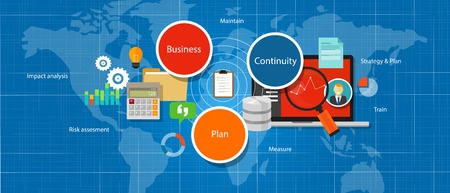Need something specific?
Looking for a specific resource not included in the resource library? Have suggestions for what you would like to see? Contact us with your suggestions.
Resource Categories
Filter resources by tag
Resource Library Use
NOTE: You are welcome to modify, copy, reproduce, republish, upload, post, transmit or distribute the materials found on the Ready Rating Resource Center provided that you include the copyright notice.
Canadian Red Cross Charity Registration Number: 119219814RR0001
Basic Business Continuity Planning on a Budget
Cost management is always a top concern for any organization. This is true even for important functions like emergency preparedness. While essential, comprehensive business continuity planning can seem like a complicated and resource-intensive process as it includes conducting a business impact analysis, developing a plan, testing the plan, training staff, etc. However, that does not have to be your reality.
Business continuity needs to be pragmatic and grounded in practical considerations. Taking the following three steps can help you prepare with minimal impact on your bottom line.
Step 1: Start with practicing and exercising. This step often comes at the end of traditional approaches to business continuity planning. However, beginning with exercises helps you develop a plan while you create experiential knowledge among your personnel.
Go about this by leveraging headlines in the news to select an incident (tornado, wildfire, storm, etc.) that is more likely to happen in your area. Then have a simple 30-minute discussion with your team focused on a situational assessment of the impact on your business, actions that you and the team would take, and communications to key stakeholders. Don’t forget to include succession planning in your discussion. Conclude with actions that can be taken to improve your readiness. Be sure to document the conversation and repeat this process quarterly, addressing different types of incidents.
Step 2: Develop or enhance your business continuity plan using the notes from the exercise. Your plan will need to set forth: the type of incident, anticipated impacts, key stakeholders, actions to be taken, and communications to be sent. As your team gets more scenario-based experience, your plan gets refined. Repeat this step every quarter or after any actual event your business responds to.
Step 3: Keep an up-to-date communications list. The list should include key stakeholders that you need to communicate with in the event of an emergency or plan activation including employees, emergency contacts like the local fire department, and external stakeholders (suppliers, customers, partner organizations, etc.). If you already maintain a directory, consider adding alternate ways of reaching individuals in an emergency. Normal contact methods may not be available. Make sure the emergency communications list is accessible to key members of your team. It is also good practice to maintain a hard copy in case of technology failure.
In addition to the steps above, take advantage of the resources on the Ready Rating website and the Red Cross website. It is a great, cost-effective way to educate yourself and your personnel on emergency preparedness. Most importantly, the materials available in the Ready Rating Resource Centre will help you get the most out of your investment in business continuity planning.
Additional Resources
- Basic BC Planning on a Budget


